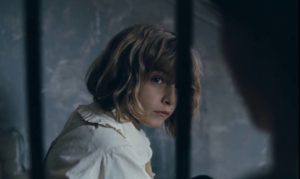 Review: One Night Only
Review: One Night Only
The Childhood of a Leader | Brady Corbet | France | 2015 | 115 minutes
UW Cinematheque, 4070 Vilas Hall, Friday, September 30, 7:00pm»
James Kreul suggests that The Childhood of a Leader might have worked better as a genre film, rather than the art cinema that it aspires to be.
Actor Brady Corbet (Thirteen, Mysterious Skin) delivers an impressive directorial debut with The Childhood of a Leader, which has won accolades including Best Debut Film and Best Director at the Venice Film Festival. The memorable, muscular score by Scott Walker has also received considerable attention. It’s the kind of film (you know, the harder stuff) that doesn’t seem to make it to Madison’s commercial theaters anymore, so we are fortunate that it will have at least one screening at the UW-Cinematheque.
Scene by scene, I liked the film quite a bit, especially the performances by Bérénice Bejo (The Artist), Liam Cunningham (Game of Thrones), Stacy Martin (Nymphomania) and young Tom Sweet. The intriguing premise functions both as an historical costume drama and an intimate psychological portrait. But as the film continued I slowly realized that it was going to be another example of a type of film I’m not crazy about: genre films that would be much better if they would not aspire to be art cinema.
Young Prescott (Sweet) lives in France with his American parents as his diplomat father (Cunningham) assists with treaty negotiations at the end of World War I. Prescott’s multi-lingual mother (Bejo) hires a local young woman (Martin) to tutor Prescott in French. The family lives in a large rural house, and most of Prescott’s care is left to the maid (Yolande Moreau), who is less strict than Prescott’s parents.
Prescott has behavior issues. The film structures itself around three “tantrums,” the first of which involves Prescott throwing stones at people outside of a church. He’s one “redrum” away from being a mix of Buster Brown and Danny from The Shining. His hair has grown long, much as might be expected for an upper class American boy (think of young George in The Magnificent Ambersons), but more than once his is mistaken for a girl. And he’s not quite sure how to respond to his tutor’s breasts, visible beneath her blouse.
Genre driven cues, especially with the music score, lead us to infer that something might be just a bit sinister about Prescott. A few other horror genre red herrings (including what looks like a stalker POV of Prescott and his tutor in a field) keep us on edge as we suspect that the quiet milieu could explode into violence. But for the most part the more appropriate genre analogy is the historical costume melodrama, especially mansion dramas like Downton Abby. The interpersonal relationships, intertwined with issues of class and politics, take up a great deal of the film’s running time.
A key difference, however, is the visual style. The cinematography is dark and atmospheric, at times bordering on hard to see. What we do see is often dense with detail—check out those tapered curtains in the passageways. The performances are peculiarly mannered, peppered with pauses and start/stop dialogue. (This performance style delayed my recognition of Cunningham, one of my favorite actors on Game of Thrones.) All of this is great, as it creates a distinct world—one that might even have little to do with the real 1919 France.
Near the end, however, a degree of cynicism crept into my response to the film. I had a similar response to the widely praised White God, which would have been a much better art-cinema take on a genre if it had delivered on the genre elements more convincingly. Some of the storytelling in Childhood is a bit too elliptical for those who want to have a genuine emotional response to the characters. I had a stronger response to supporting characters, like the maid and the tutor. I was intrigued by Prescott. I’m not sure if I really cared what happened to him. I expected a bang, but young Prescott delivers more of a wimper.
A final elliptical jump goes a bit too far to effectively keep us emotionally involved. The time leap is also a conceptual leap, not unlike the leap at the end of Jauja, another praised film that I didn’t like on similar grounds. The conceptual leap, to put it bluntly, is more than a little bit silly (especially a “reveal” that is too underdeveloped for us to even have time to care about). The final minutes jettison all that was interesting visually in the rest of the film, and substitutes derivative iconography that has lost its power as it has become cliche.
There are many moments of visual power, especially ones punctuated by Walker’s emphatic score. Those moments will benefit from being seen and heard big and loud on the big screen. The audience will then have to decide if Leader is an emperor with new clothes.